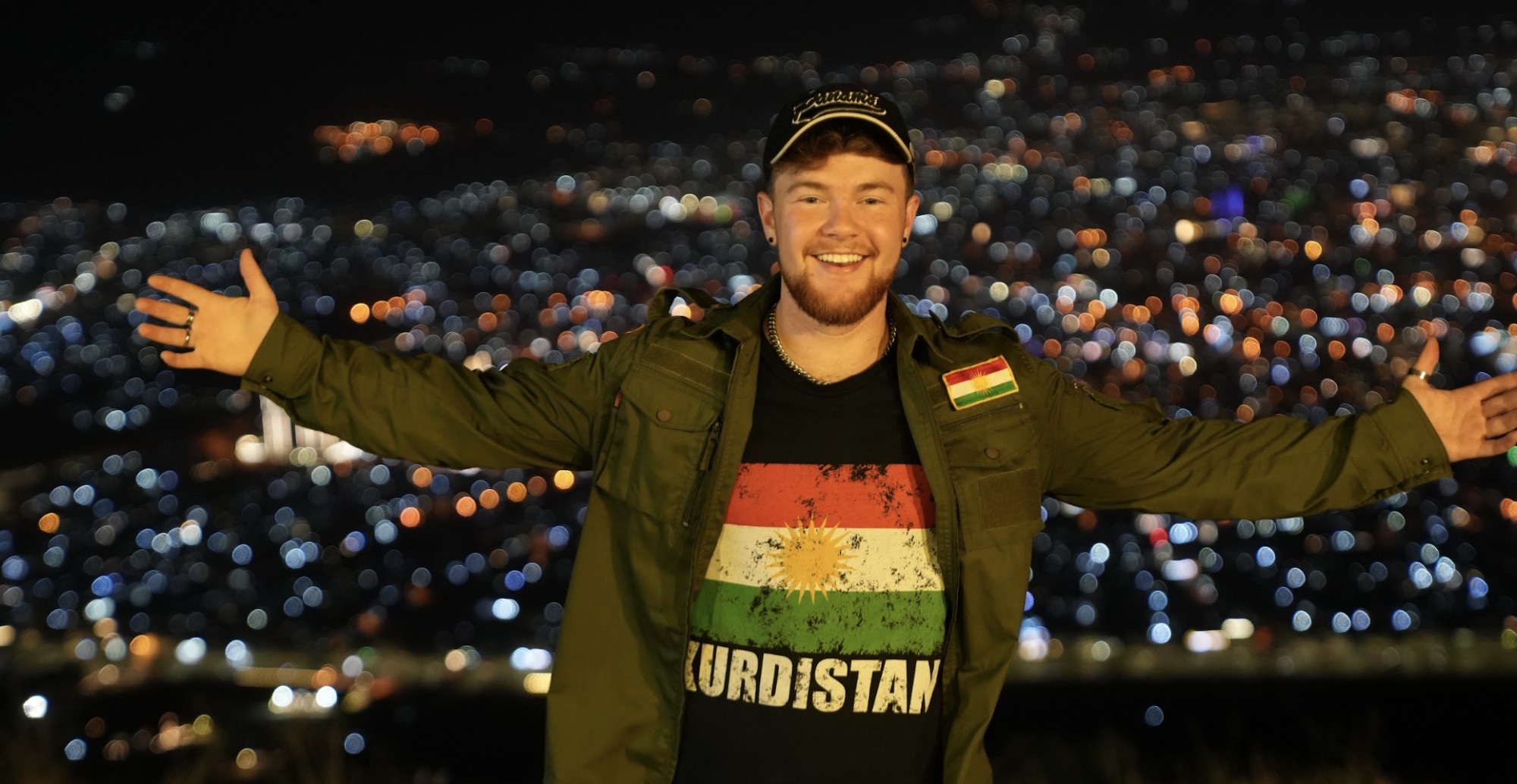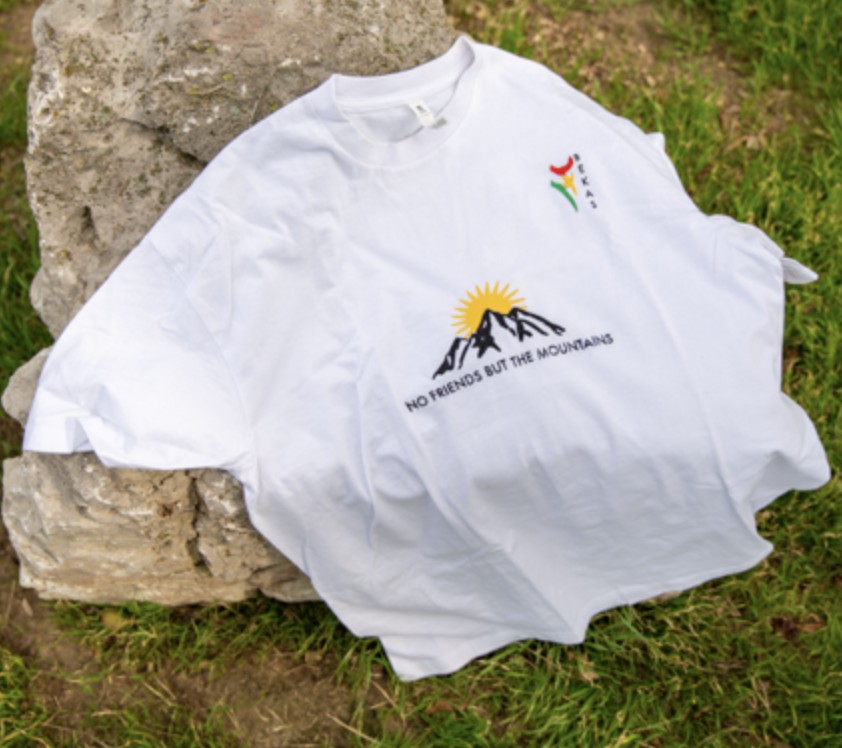Our first task in life is to walk, and with each step, we grow more aware of the surfaces beneath us. From our innate desire for comfort emerge colorful, soft carpets handwoven with care and tradition. Each knot tells a silent story, echoing the Kurdish saying that if you have a wish, you should tie grass together and knot your desire to the ground.
Among the countless types of woven carpets, Kurdish carpets (tewn) hold a unique place in craftsmanship, although they are connected to a wider tradition of carpet-weaving. “When discussing Kurdish carpets, we transcend the geographical boundaries of modern nations, as they do not define them,” explains Kawan Kareem.
Holding a master’s degree in Culture and Crafts with a specialization in handwoven carpets, Kareem is not just a salesperson, but a dedicated advocate of Kurdish carpets. As the founder of the first digital platform dedicated to Kurdish carpets, he works to revive awareness and share daily insights about these intricate works of art. Unlike durable objects such as tiles or vases, carpets are crafted from delicate materials and are thus fragile, making their preservation more challenging.
Though the exact number of surviving Kurdish handwoven carpets is unknown, estimates suggest that there are nearly 500 distinct types, each with unique characteristics. While Iran boasts some of the most renowned carpets, other countries such as Turkiye and India have their own distinct traditions. Appreciating this diversity is essential to understanding the cultural richness of handwoven carpets. To truly value Kurdish carpets, one must first respect and acknowledge the artistry of carpets from other traditions.
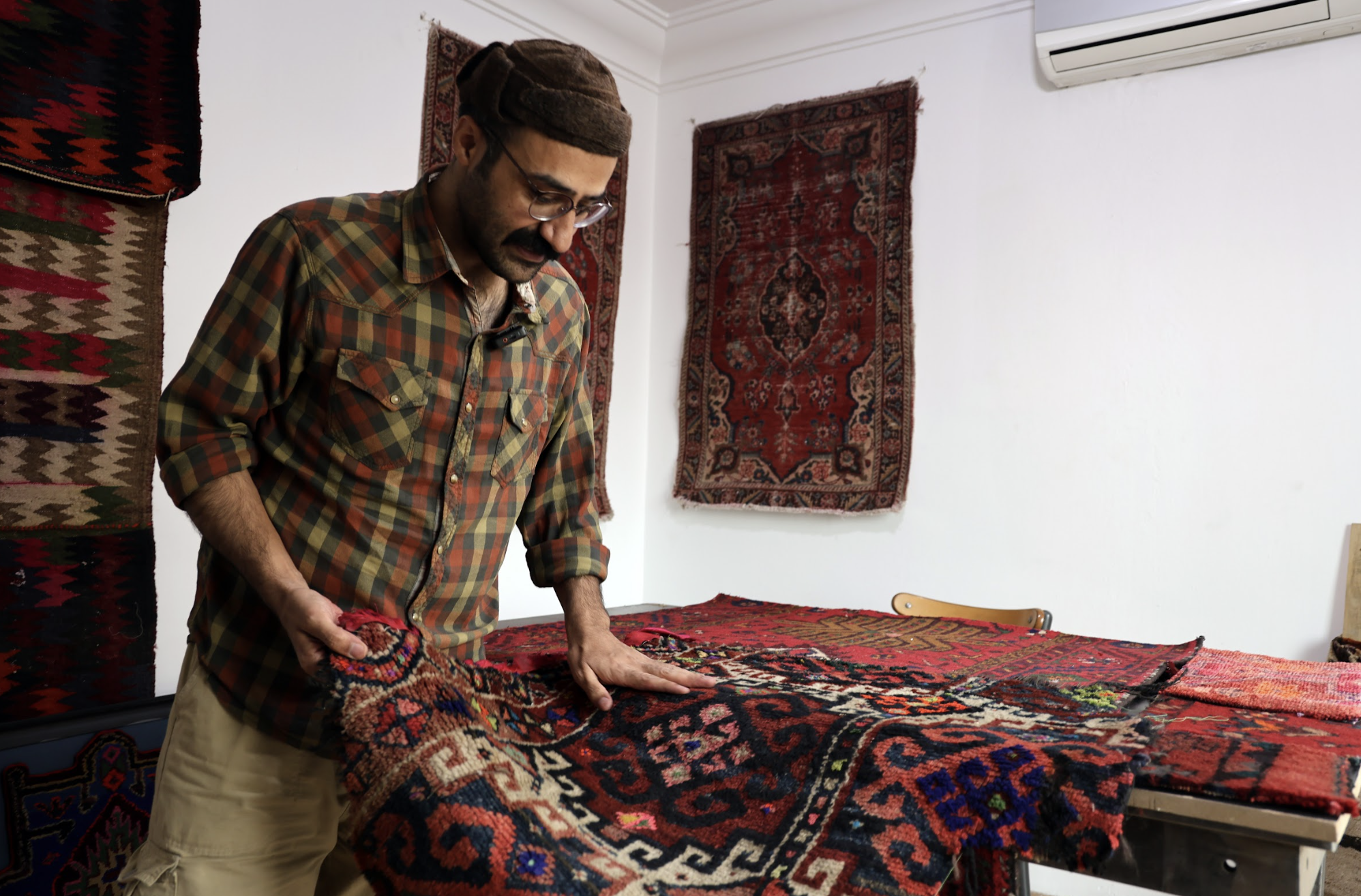
Forgotten Threads
The greatest challenge facing tewn is obscurity. Public awareness is alarmingly low, even among art students. Few know that Erbil once housed two bustling carpet factories employing hundreds of people just 40 years ago.
In contrast, other countries have preserved their handcrafted carpets by integrating them into academic studies, thereby safeguarding and elevating their cultural value. According to Kareem, Kurdish carpets are still produced in parts of northern and eastern Kurdistan (southeastern Turkiye and northwestern Iran), but their cultural essence is being diluted as weavers increasingly cater to buyers’ demands.
During his visits to Erbil’s Qaysari Bazaar, Kareem has informally surveyed over 50 shopkeepers about their carpets. His findings were troubling: many misidentified Persian carpets as Kurdish, unintentionally deceiving buyers. This misinformation extends beyond carpets to other cultural artifacts, such as Kurdish women’s tattoo traditions, which are often misrepresented for marketability. The lack of recognition of authentic Kurdish handwoven carpets allows other countries to claim them, displaying them in museums and selling them in markets under different identities.
Kareem has also searched for books about Kurdish carpets authored by Kurdish writers, finding that while Persian and Turkish researchers have published works on tewn, many contain inaccuracies due to a lack of firsthand knowledge or conflate common symbols in the carpets without accounting for their differences. These misunderstandings fuel ongoing misinformation, which is something Kareem is tirelessly working to address through his platform, Tewn_Carpet, where he aims to shed light on the history, symbolism, motifs, and weaving techniques of Kurdish carpets. Motivated by a deep desire to highlight the richness of Kurdish culture, Kareem is determined to ensure that tewn is neither erased from history nor forgotten.
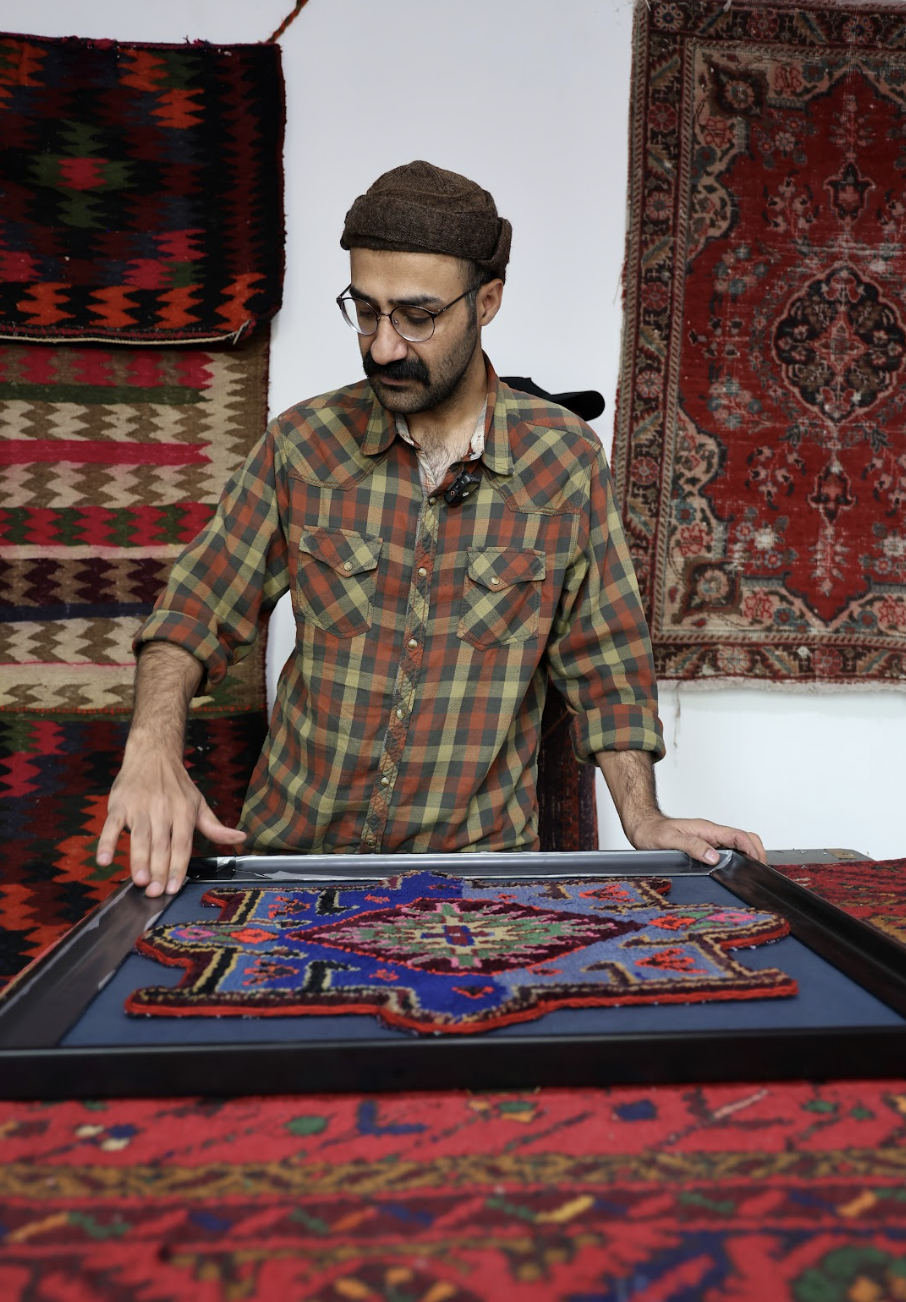
Preserving and identifying
To preserve carpets, proper storage is vital: the temperature must remain between 25-30°C. Too low, and the calcium in the cotton breaks down, causing the carpet to crumble and disintegrate when touched. Too high, and larvae infest the fabric. Carpets must be exposed to sunlight during the summer to prevent such infestations and should not be displayed for extended periods to avoid damage. Instead, photographs should be used for exhibitions, with original pieces shown only on special occasions. Repairing carpets is another means of preservation, though this process is generally reserved for private collectors. Without proper conservation efforts, many of these cultural treasures may be lost.
Kurdish carpets are identifiable by color, patterns, and weaving techniques. Each area of Kurdistan uses unique natural elements for dyeing. For example, walnut shells create distinct hues uncommon in other regions. The native Shlera flower (Fritillaria imperialis) is another key source of dye, allowing experts to trace a carpet’s origin to Kurdistan. Artistic patterns and motifs are another distinguishing factor. Each design reflects history, storytelling, and the intentions of the weaver. Lastly, different areas employ distinct weaving techniques, some blending styles due to proximity to borders. For example, Bijar carpets incorporate influences from neighboring regions, while Kurdish carpets made near Mosul blend Kurdish and Arabic weaving styles.
Kareem emphasizes the importance of recognizing these factors, but also acknowledges that not everything found on Kurdish land is inherently Kurdish. Carpets, as luxury items, were often exchanged as gifts, making it imperative to investigate their origins carefully to avoid drawing incorrect conclusions.
A notable example is the Pazyryk rug, one of the world’s oldest discovered carpets. “Claimed by the Persians – and increasingly by the Turks – it carries evidence of being Kurdish. Discovered almost 100 years ago, it was wrapped in a handmade item, and the weaving method of that item is unique to Bijar, Iran, where it is still practiced today. Historical records suggest it was sent as a gift to an important figure,” Kareem explains.
Kareem also notes that during the time this carpet was made, the Bijar region was predominantly Kurdish. Similarly, some carpets displayed in the Erbil Citadel Museum are mislabeled, further emphasizing the need for accurate research and documentation.
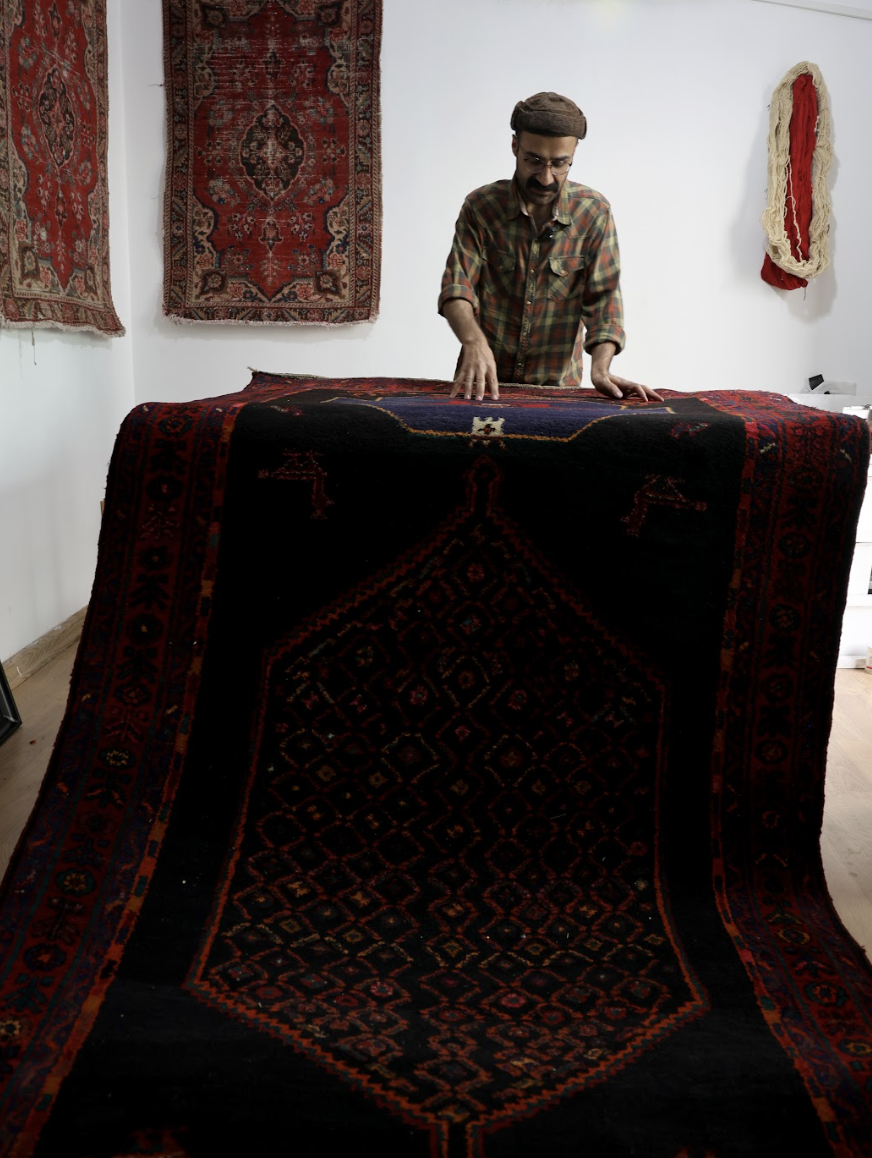
Decline in woven legacies
Forgetting cultural heritage, of course, is not unique to the Kurds. According to Kareem, 40 years ago, carpets constituted 25% of Iran’s economy, but today, only 5 million out of 85 million Iranians are involved in carpet weaving, a decline driven by modernization and decreasing nomadic lifestyles.
In Kurdistan, the reasons for decline vary by region. Southern Kurdistan (northern Iraq) suffered most from conflict, which displaced weavers and disrupted production. Many Kurdish carpets from southern Kurdistan also now reside in foreign museums, including one in California housing over 50 Kurdish carpets. In Northern and Eastern Kurdistan, mechanized production has largely replaced handmade weaving. Weaving has always been labor-intensive, and people increasingly seek less strenuous, more profitable work.
Another major factor is the depopulation of villages – historically the heart of carpet production – brought on by conflict or the search for better opportunities in urban areas. Some countries addressed this development early, offering loans to artisans and opening rural factories to sustain traditional crafts. The changing design of homes has also played a role in the decline of handwoven carpets. Whereas in the past, dirt or concrete floors were covered in carpets, today carpets are primarily decorative, which has reduced overall demand.
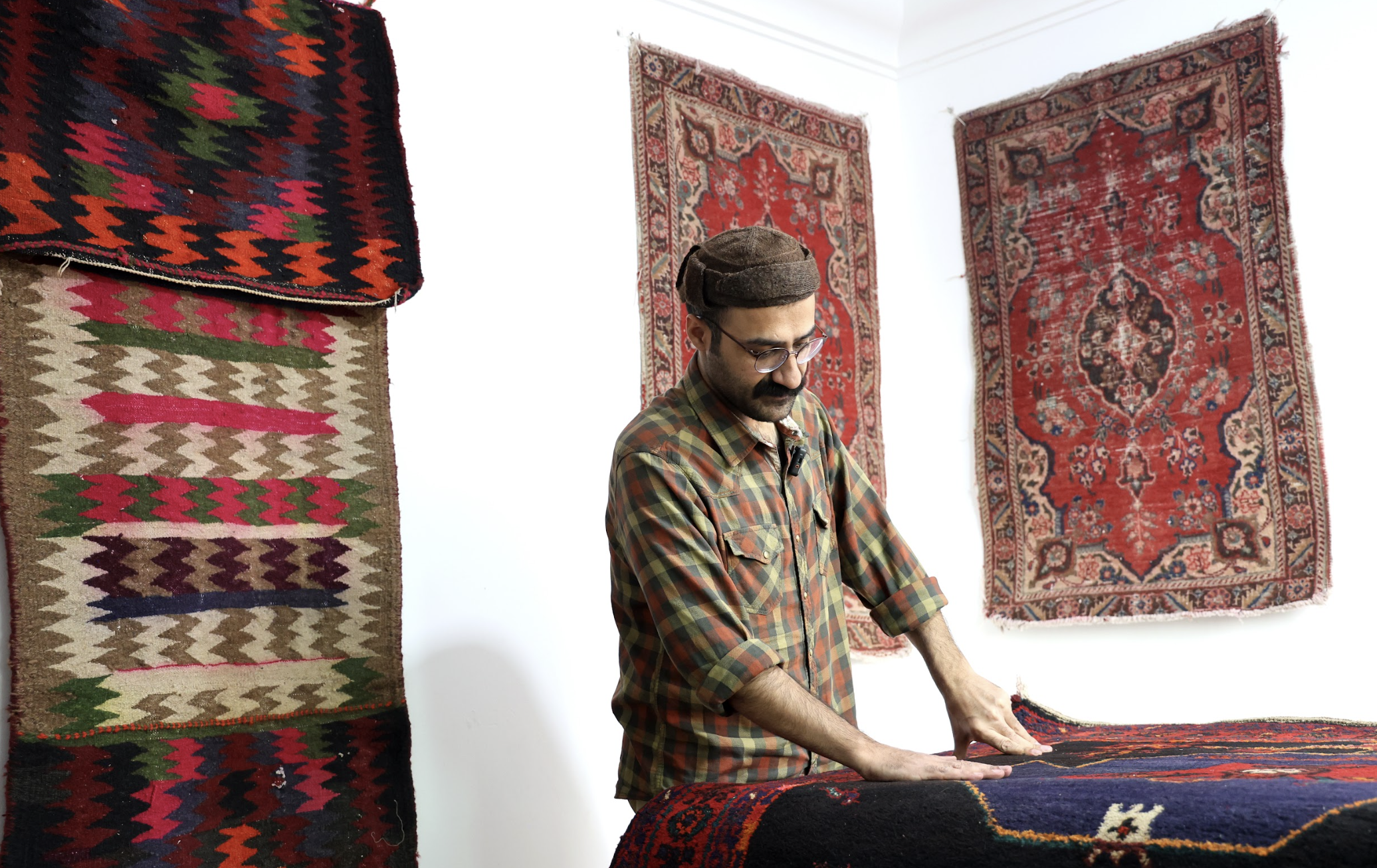
A passion for handwoven art
“The mission of Tewn_Carpet goes beyond selling carpets – it’s about educating people,” says Kareem, who was once an aspiring musician but found an unexpected passion for carpets. “I wanted to study an art form, but realized art exists everywhere.”
Disturbed by the lack of awareness surrounding Kurdish carpets, he launched an Instagram page to inform the public. His efforts gained traction after a collaboration with the Nishtman Strategy Institute, where a video introduction to his work attracted thousands of followers. Encouraged by the response, Kareem plans to publish a book on Kurdish handwoven carpets. He has also been approached by individuals seeking to restore valuable tewn pieces, requiring expertise in materials, dyeing, and preservation.
“There were times when I saw a valuable tewn lying damaged in someone’s garage and would acquire it and restore it,” says Kareem, who would either add those salvaged carpets to his collection or resell them to interested individuals.
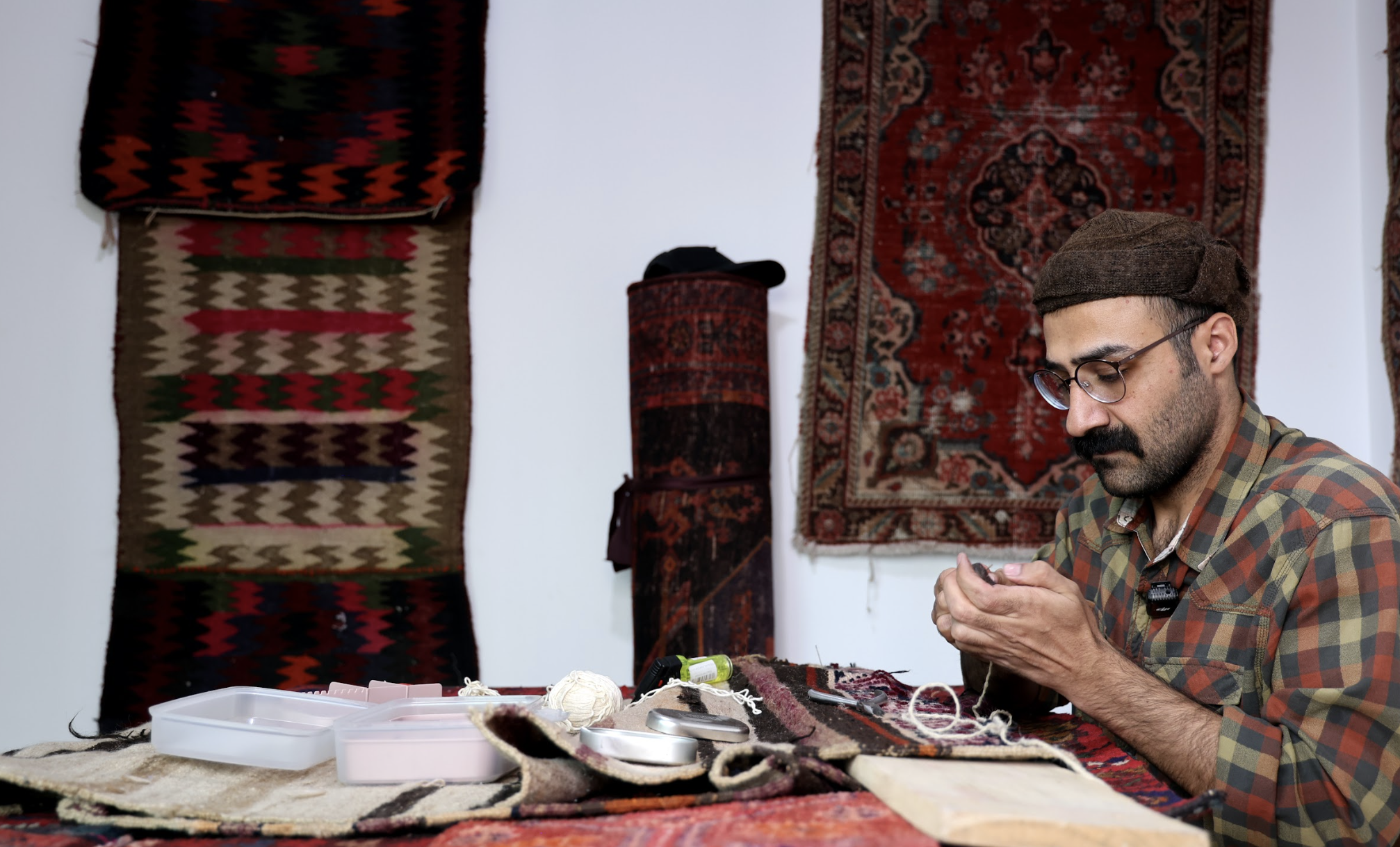
Clan, culture, and tradition
Unlike other art forms, many Kurdish carpet designs are communal, belonging to clans rather than individuals. Kareem explains that weaving is a collective art, influenced by the surrounding environment, cultural exchange, and neighboring traditions.
While other countries have systematically documented their carpet designs through mapping, Kurdistan has not, making it difficult to recognize and reclaim traditional patterns. Only a few regions – such as Bijar, Kermanshah, and Sanandaj – have undertaken this work. Without proper documentation, much of Kurdistan’s rich legacy risks being lost.
Kurdistan’s carpet weaving falls into three categories: city carpets, village carpets, and nomadic carpets, each shaped by lifestyle, beliefs, and geography, and reflected in the colors, motifs, materials, and weaving techniques. For instance, climate determines the thickness of carpets, with colder regions producing thicker weaves. Designs also vary dramatically according to the abovementioned factors.
Kareem underscores that weaving is not merely a craft; it reflects the weaver’s spirit, history, and identity. To preserve this heritage, thorough documentation and academic integration are essential – before these woven stories unravel completely.
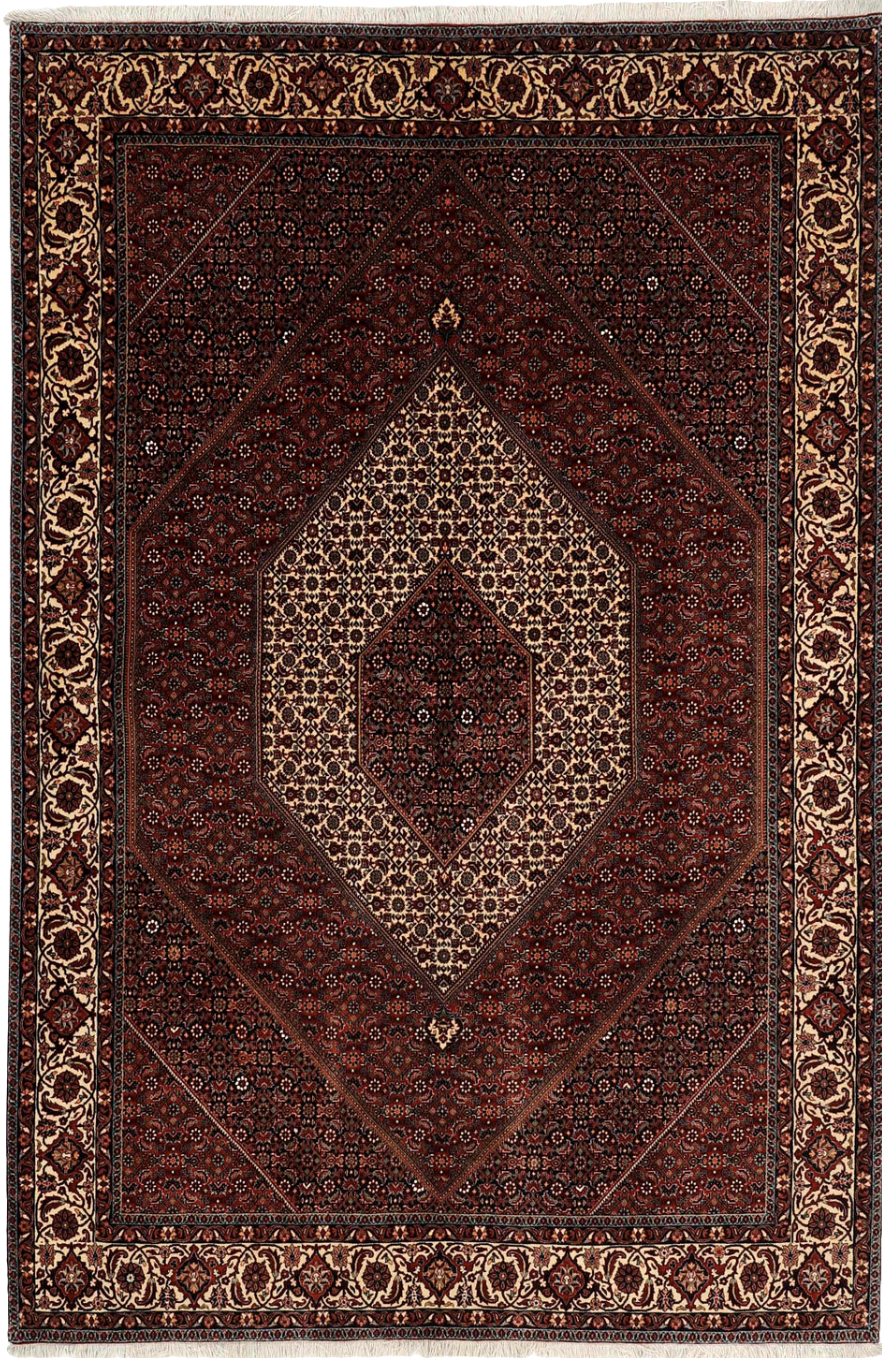
Handwoven carpets of Erbil
According to Kareem, the tradition of hand-woven carpets in Erbil traces its origins to the citadel, where carpets were an essential part of every building, covering its floors. Within Erbil, carpets can be categorized into three main types: those woven in Erbil itself, those from surrounding areas and villages, and those originating from Erbil’s clans. However, as Kawan notes, limited research and the fragile nature of these materials have left little data about each type. What is clear, however, is that many carpets came from clans that migrated to Erbil, especially as the city expanded rapidly in recent years.
The most notable and popular style of carpets from Erbil is saranaz, also known as lakeash, which translates to “rectangular.” This distinct shape led to repetitive artistic patterns that became a defining feature of these carpets over time. The primary material used in weaving Erbil’s carpets is wool, though cotton was occasionally incorporated. Among the most renowned carpets were those crafted by the Seeyan clan, whose creations were exported to Iran, Turkiye, Baghdad, and beyond. In contrast, most other clans wove carpets for personal use rather than trade, further elevating the prominence of the Seeyan clan.
For a time, tewn was not considered an economically important product. However, this changed when the government established carpet factories, including two in Erbil. These factories primarily produced designs influenced by Turkish and Persian styles due to their high demand. The carpets were sold both within and outside Kurdistan, labeled as “Kurdish-Erbil.” Some examples of these factory-made carpets have survived to the present day. As a result, Erbil carpets can be divided into two distinct periods: those made before the establishment of factories and those made afterward. The first group is deeply rooted in local culture, while the second prioritizes economic value, often mimicking trends from other countries.
One distinguishing feature of traditional Erbil carpets is their vibrant red and purple hues. Unfortunately, much of the purple in surviving carpets has faded, with some having lost their color entirely. Carpets dyed using natural materials have retained their colors better, but most of these pieces are now held outside Kurdistan in foreign collections.
The weaving techniques used in Erbil carpets are also distinctive, with two primary styles being employed. The first is parallel weaving, where two knots are tied on the same string, appearing parallel. The second is semi-parallel weaving, which is similar but features one knot appearing as a half knot. These methods create distinct textures and patterns unique to Erbil’s carpets.
Another way to identify handwoven carpets from Erbil is through their motifs. Kawan notes that Erbil carpets feature over 500 distinct motifs, ranging from trees and animals to depictions of ducks and chickens. He emphasizes the importance of studying these motifs to understand their origins, the clans they represent, and the history behind them. “Before asking which carpets belong to Erbil,” Kareem cautions, “we should ask which clans lived in Erbil. Each carpet holds art and stories, and we must investigate what these illustrations mean and what history they carry.”
The need for thorough documentation of Erbil’s remaining carpets is urgent. To preserve this rich cultural heritage, researchers must record what survives, study the motifs and techniques, and recover the knowledge of what has been lost over time. This effort is essential to safeguarding an integral part of Kurdish identity for future generations.
Kaveen Shkearvan is an interpreter and translator based in Erbil, the Kurdistan Region.
